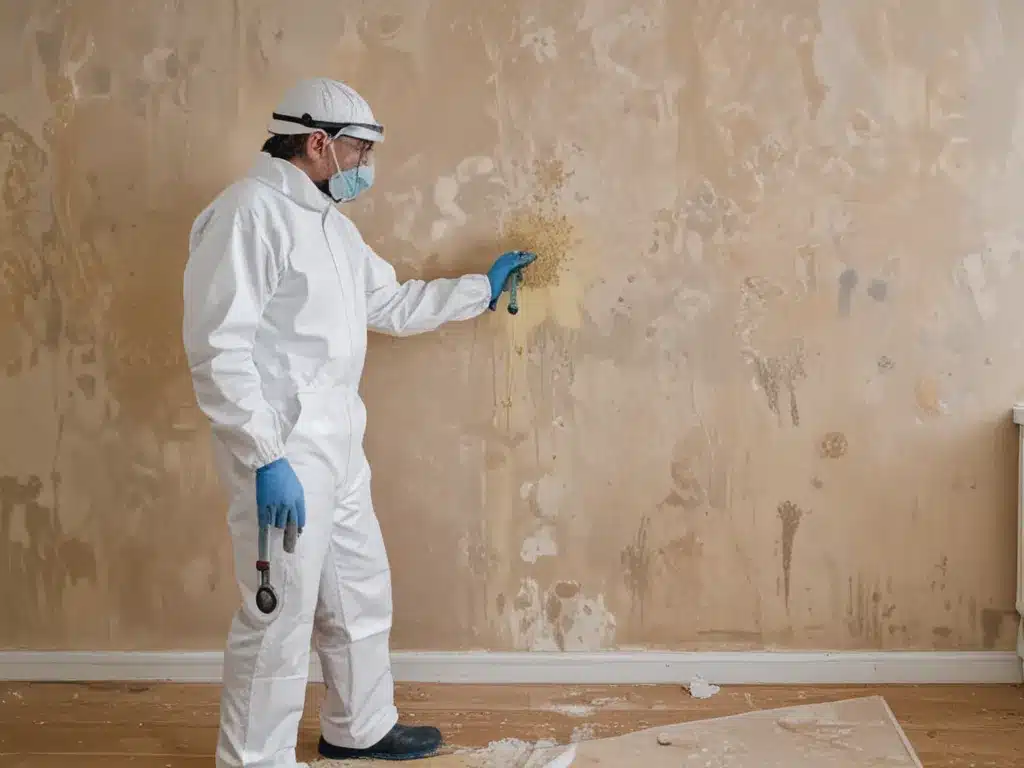
Mold growth in the home can cause a number of health issues, from allergic reactions to more serious respiratory problems. Removing toxic mold properly is crucial for improving indoor air quality and protecting your family’s health. Here is a comprehensive guide to identifying and removing toxic mold from living spaces.
Assessing the Mold Problem
The first step is determining if you actually have toxic mold and how widespread the growth is. Here are some tips:
-
Look for visible mold growth. Check along baseboards, under sinks, behind furniture, and around windows where moisture accumulates. Mold comes in many colors like black, green, white, or gray.
-
Detect hidden mold. Musty odors, peeling paint or wallpaper, warped floors, and condensation on windows can indicate mold you can’t see.
-
Test the air. Use at-home mold test kits or hire a professional to measure mold spore levels indoors. Higher levels indicate a mold issue.
-
Find the moisture source. Mold needs moisture to grow. Leaky pipes, roof damage, flood damage, humidity, or condensation from poor ventilation can feed mold.
-
Determine if it is toxic. Some types like black mold (Stachybotrys chartarum) are toxic and require special removal. Get samples tested by a lab to identify mold types.
Protecting Yourself During Removal
Mold spores can be released into the air during removal if proper precautions are not taken:
-
Wear an N95 respirator mask to avoid breathing in spores.
-
Use protective gloves that cover wrists and forearms.
-
Wear disposable coveralls and shoe covers to keep spores off clothing.
-
Seal off the affected area from the rest of the home with plastic sheeting.
-
Turn off any central HVAC systems to prevent spreading spores.
-
Open windows to ventilate the area if possible.
-
Use High-efficiency HEPA air scrubbers to filter spores during removal.
Removing Mold from Various Materials
The removal method differs based on the type of material affected:
Porous Materials
Porous materials like drywall, carpeting, insulation, and ceiling tiles provide food for mold to grow. They usually need to be discarded.
-
Drywall – Remove and discard affected drywall. Inspect wall cavity for hidden growth.
-
Carpet and padding – Pull up carpet, padding, and tack strips and discard. Check subfloor for damage.
-
Insulation – Remove and replace fiberglass or cellulose insulation in walls.
-
HVAC ducts – Clean metal ducts. Replace insulation, lining, or filters if covered in mold.
Non-Porous Materials
Non-porous materials like glass, plastic, tile, metals, and solid wood can often be cleaned:
-
Use detergent and hot water to scrub visible mold from tile, solid wood, glass, plastic, and metals.
-
Bleach solutions (1 part bleach to 10 parts water) kill mold but may discolor surfaces.
-
Concrete may need a strong bleach solution, pressure washing, or paint designed to encapsulate mold.
-
Avoid cleaning treatments that spread spores like brushing, vacuuming, or pressure washing prior to containment.
Containing and Discarding Moldy Materials
-
Seal affected materials in plastic bags before disturbing them to avoid spreading spores.
-
Wet down materials with a sprayer or misting bottle before removal to suppress spores.
-
HEPA vacuum debris rather than sweeping. The high-efficiency vacuum filters capture mold particles.
-
Dispose of moldy materials in sealed, heavy contractor bags.
Preventing Mold Growth
The key to stopping mold long-term is keeping your home dry. Here are some prevention tips:
-
Fix any roof leaks, plumbing leaks, or foundation moisture issues.
-
Increase ventilation and air circulation with fans, dehumidifiers, HVAC maintenance, and opening windows.
-
Clean gutters and direct water away from the foundation through proper grading and drainage.
-
Avoid excess humidity from steamy showers and cooking. Run bathroom and kitchen fans.
-
Insulate pipes and cold surfaces like exterior walls to reduce condensation.
-
Clean spills and standing water immediately.
-
Dry damp areas like windows, walls, and carpets quickly.
-
Be sure bathrooms and laundries have exhaust fans vented to the exterior.
With diligence removing existing mold and keeping your home dry, you can protect your family from the health hazards of toxic mold exposure. Consult professionals for large-scale mold problems or health concerns.






